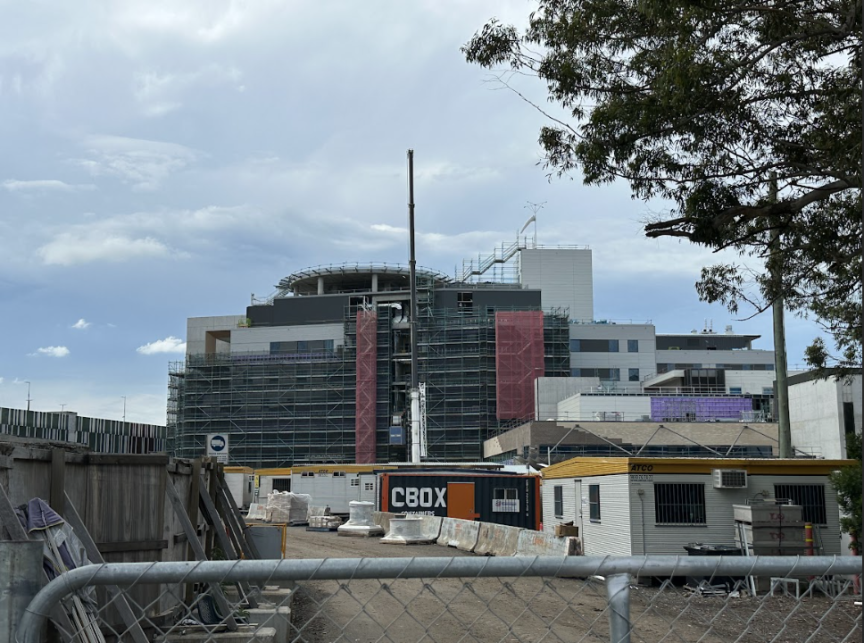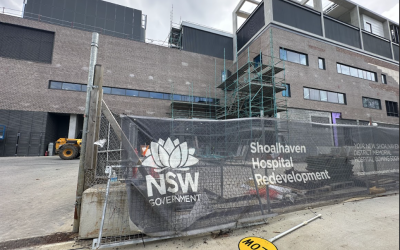March Blog
(NOTE: For the Most Current Information – this Blog post was Expanded, Updated and Re-Written in early April. READ THE NEW ARTICLE HERE)
Just when you thought we had enough drama, this.
Disclaimer: I won’t try and sound like a medical expert. I’m not.
I won’t try and make predictions about global pandemic statistics. Plenty of other sites for that.
But…
Lots of people have asked me for a market update, and for my thoughts on what has been happening as a specific response to the current situation in the real estate market. I will do my best below.
What I have seen so far, based on the experiences of my recent clients AND conversations with my esteemed REBAA executive friends (some of the best BA’s in the country) AND some of my network of sales agents.
The comments are not the only perspective nor are they intended to make light of the situation but are made based on more than a few data points and I hope… helpful.
Before I start, a few questions that YOU should be asking if you are considering a buying decision.
1 Supply and Demand – stock and seller behaviour vs buyer behaviour?
2 Interest rates – and how the cuts will influence?
3 Stimulus – and what it might mean?
4 Which markets have the most to lose / gain from the current situation?
In light of those questions, my thoughts below.
Recent Market Wrap:
Thus far the regional and coastal markets have not slowed. In many cases the reverse has happened, with homes selling quickly after multiple offers, vendors being more realistic and selling prior to auction whenever possible. I have missed a number of properties that have sold above asking price or at the top of a quoted range, in some cases client’s expectations were not in line with the market despite my advice, and they missed out.
Stock levels have been low for some time. They seem to be going lower. Vendors are not selling unless they need to. This means there is a shortage of good quality homes to choose from.
Supply is always the side of the equation people forget to factor in. If supply is low prices rise, competition is fierce and “bargains” are few and far between. Demand can rise and fall and we see crazy situations short term… toilet paper anyone? But capital gains long term need both limits on supply AND consistent demand.
Some inferior properties have had price drops to meet the market and committed vendors will be realistic moving forward quickly with the first well-priced offers they get.
If you want to buy, be aware you need to be decisive and willing to move quickly. Of course all the usual research and due diligence should be done thoroughly and without cutting corners but simply waiting around for price falls has not worked in recent months.
Buyer Behaviour:
Homebuyers have been very hungry for the right properties. Avoiding lemons is more important than ever, so make sure you know all the council rules, zoning, easements, restrictions and risks for any property you are considering. Long term the good homes will always be in demand but lately, they have been selling like canned fish and rice.
Investors are around but are picky. They want cash flow first and foremost and capital gains too but no longer are they willing to haemorrhage cash each week to speculate on gains. I have had a number of investors recently go above 5% in good quality areas. Certain properties are positive cashflow again which has not been the case for many years.
I have had a significant number of cash-only investors, so people are planning for retirement or semi-retirement and want to buy milk and bread (and toilet paper) with the rent. In that situation… 2% yield for a premium city house does not make sense. They tell me that logic dictates quality regional stock with 4-6% rent returns is outperforming cash in the bank and falling share prices.
Some buyers are afraid and have pulled out of the market altogether. So have some sellers. This kind of thing appears to have been the minority so far and any buyers holding off seem to have been more than made up for by hungry and decisive buyers fighting over the very limited stock.
Interest Rates:
Interest rates have just been cut to record lows. In addition to that the RBA has announced it will start Qualitative Easing. I won’t dive into the detail of what that is but simply put printing money and stimulating the economy in a range of ways. They have also said they won’t raise rates until unemployment FALLS to 4.5% (which is a lot lower than we had last year) For more info read this article
The short version is this: For the next 3+ years we should have access to the lowest cost finance of not just our own life-time but any previous generation. Ask yourself…what does low cost finance typically do to asset prices?
Crystal Ball:
There are lots of things we don’t know. Some we do.
Slow down and think about it.
When stocks are up and down like a yoyo the risk is very high being in shares. For those able to play the timing game they will do well in stocks. Many will lose this game too. Most pull out as they can’t handle the stress.
When interest rates are at or close to zero there is no passive income leaving money in the bank. Capital is eroding if you spend it all on toilet paper and canned fish.
Gold is a hedge many people chase during market changes but it generates no return, no income. Gold prices have recently been as erratic as shares currently so any benefit in investing in precious metals will be highly dependent on timing and therefore the quality of information you have to get that just right. (I read a lot but don’t have any specific intel on this – sorry. If I did I would be a full-time gold trader).
What assets are left? Rest assured – the money will go somewhere.
What Next for Real Estate?
I would not insult you by saying everything will be totally fine and property is immune from effects of the virus. It isn’t.
Certain properties and certain suburbs could see price dips this year.
However, to be honest, I think property is almost the last asset standing if you have capital that wants a simple return of 3-5% or thereabouts, and long term value gains, and want it to be as safe and reliable as possible.
Residential property performs a NEEDED service. This is called DEMAND. People don’t leave their house when prices fluctuate. Demand isn’t going anywhere.
In the short term property developers will slow down, this will create a reduction of SUPPLY.
Even if our economy and our work behaviour changes it is important to remember humans still need a house to live in.
Every. Single. Human.
Less supply and ongoing demand puts a floor under prices. Especially in a low interest rate borrowing environment.
Even if short term this crisis gets worse, even if for a few months governments and banks around the world give temporary payment holidays for rent or mortgage payments, long term these markets will recover from any bumps in the road.
For 100 years we have tracked these things, in which time we have had world wars, nuclear fears, pandemics, tech meltdowns and stock market crashes. The total return of real estate has risen by 11.1% (rent plus growth) over that time.
More importantly, in my humble opinion housing is such a critical asset type that our government has a strong motivation to prevent a collapse. We have already seen rate cuts and stimulus announced. We will see more.
Buying a Home?
People are still buying houses. Inspection and sale methods will evolve but the need for homes will not.
Regarding price, historically the premium stock above $2m is where the greatest fluctuation has been in times of dramatic market shifts. Wealthy people typically have a large amount of exposure to the companies who’s share prices are currently falling. Those who sold stocks early enough or are in industries that are booming will use this time to purchase high grade assets with less competition. Those in the know zig when others are zagging.
Lower down the median scale has previously been a different story. Affordable dwellings where a tenant can still pay their rent with basic employment or even a government benefit plus part time work have often been more stable and the most resilient from market falls. People with jobs will still buy the best home they can afford for their family.
Multi income properties, duplex pairs, blocks of flats in lower priced areas have all been in high demand from my investors in recent months for exactly that reason.
If you are buying a home, then most people will still buy wherever you planned to purchase.
If you were leaving Sydney or Melbourne for a sea change, then you are not alone. Many people are accelerating this decision to remove themselves from the more dense populations of our big cities. Affordable coastal and desirable regional locations should perform well in the short to medium term. Simple supply and demand. Few new homes and lots of new people.
Investing? Where… (& Where NOT to)
I believe any area that relies on heavily man made entertainment, large scale events or international tourists or buyers is in for a tough year.
Instead consider targeting INTERNAL migration of Australians with proven demographic trends to areas with lower population density, higher land content and natural attractions that remain in demand when germs are a big factor in decisions. Then ask yourself… where are the jobs?
Combining the above demographic logic with an eye on jobs is the key to avoid the worst and hopefully get the benefit of the best of the next 3 years.
Consider towns with very low risk employment options. Health (obviously), government, infrastructure projects (especially the kind that are likely to be in favour when a govt is kickstarting an economy) transport etc will provide the best and most stable options.
Our investors are targeting infrastructure towns where hundreds of millions of dollars of projects are already committed. We believe these towns will see less of an impact from unemployment than any destination tied to international tourists for example. New roads, new hospitals, new power stations, these are projects that will help provide jobs and insulate local economies regardless of how the headline reads in the big city.
Medium term more Australians are likely to choose not to go overseas. Local tourism including short stays in bush and beach locations will benefit once people want a break from the city (already happening). If you are considering investing in these locations just make sure there is enough employment for you to have the choice of short or long term tenants. Having the option to switch between the two gives you more flexible ownership options and future proofs your income. Having cashflow is what will prevent you from being bumped off in bumpy times.
Big picture:
People are concerned. Further virus control measures are likely in the short term. Impacts on our economy will be real and the housing market will not be immune.
But we know the govt. has no desire to see home owners or the economy fail en masse. Low interest rates and QE and stimulus will provide upward pressure on the market for years to come. Not all markets will perform equally.
The next year will be a bumpy ride but some will benefit.
Some always do.
For anyone unsure of their next move – whether buying, selling or holding… we are currently offering brief support calls for FREE or an in depth review for an hourly rate.






